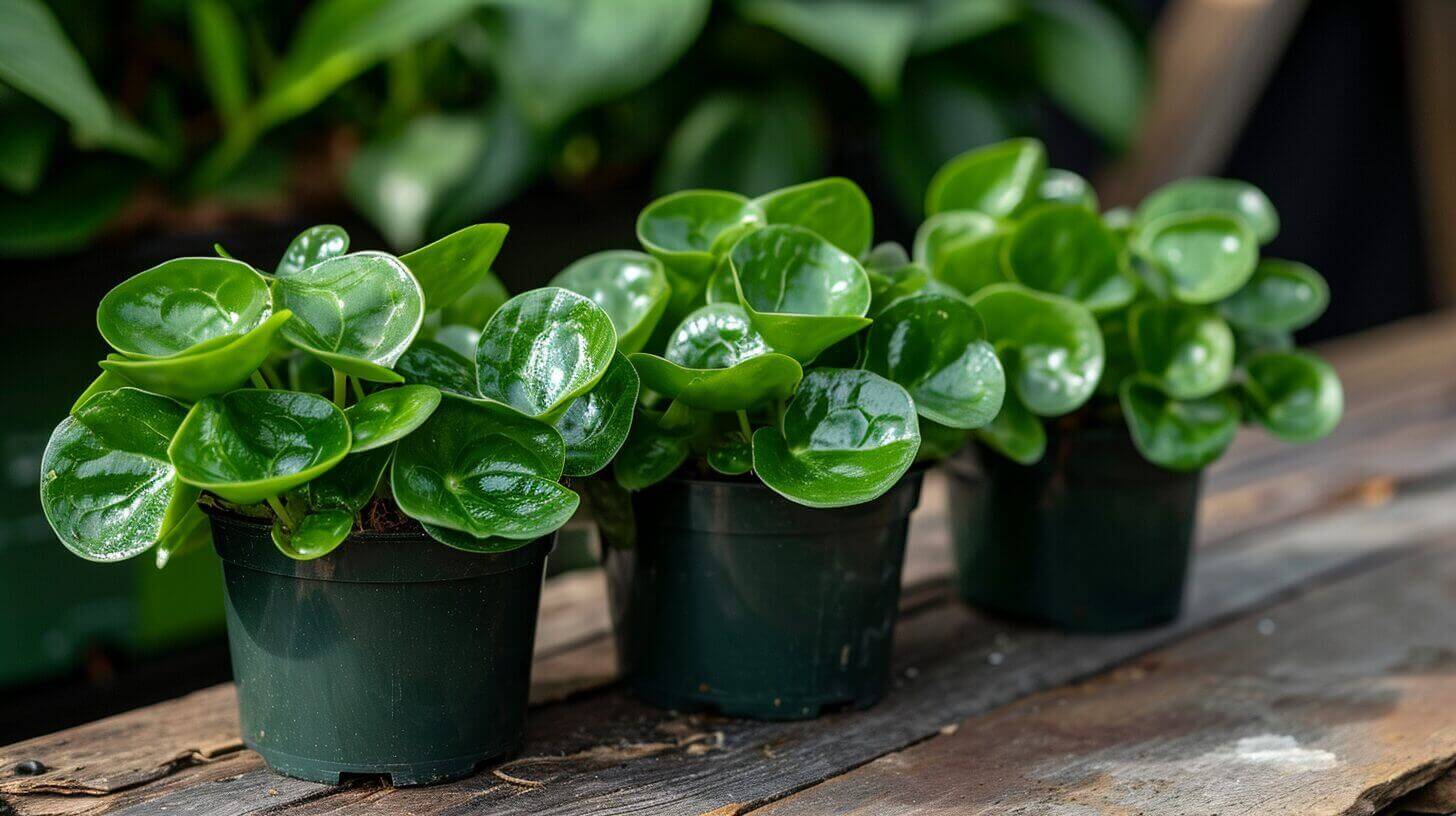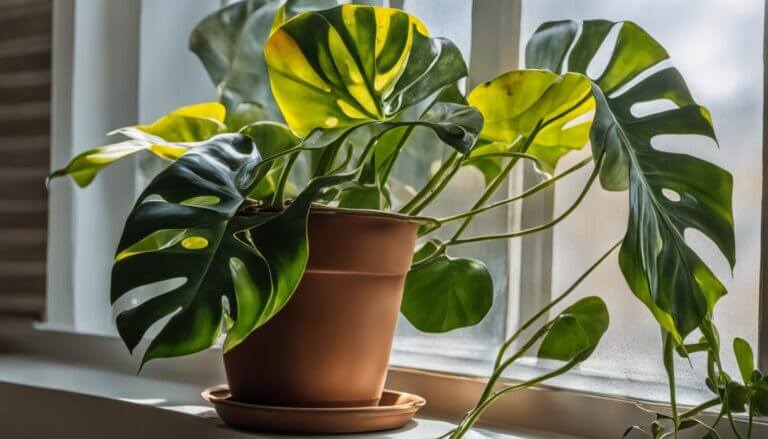Propagating Peperomia Plants: A Step-by-Step Propagation Guide for Beginners
Growing and propagating plants can be a rewarding experience, especially for beginners looking to expand their indoor garden. Peperomia plants, with their vibrant foliage and easy-care nature, are an excellent choice for those new to plant propagation. In this step-by-step guide, I will walk you through the process of propagating peperomia plants, from selecting the right time to propagate to the different methods you can use. Whether you’re a seasoned green thumb or just starting out, this guide will equip you with the knowledge you need to successfully propagate peperomia plants.
Key Takeaways:
- Peperomia plants are easy to propagate and can be grown from stem and leaf cuttings.
- The best time to propagate peperomia plants is during the spring or summer when they are actively growing.
- Essential tools and materials for propagating peperomia plants include pruning shears, a vase or jar, a small pot, well-drained soil mix, and rooting hormone.
- There are two main methods of propagating peperomia plants: stem cuttings in water and stem cuttings in soil.
- Leaf cuttings can also be used to propagate peperomia plants and require a similar process with slight variations.
When to Propagate Peperomia Plants: Timing is Key
Timing plays a crucial role when it comes to propagating peperomia plants. While these tropical beauties can be propagated year-round, the best time to propagate is during the spring or summer when they are actively growing. This period provides optimal conditions for successful root development and overall plant growth. However, don’t fret if you miss this window as peperomia plants can still be propagated in the fall or winter, albeit with slower progress and potentially lower success rates.
Spring or Summer: Ideal Conditions for Propagation
During the spring or summer, peperomia plants are in their prime growth phase, exhibiting increased metabolic activity and heightened nutrient uptake. This makes it an opportune time for propagation as the parent plant is more likely to have sufficient resources to support the growth of new roots and shoots. Additionally, the warmer temperatures and longer daylight hours create a favorable environment for root development and overall plant vigor.
Fall or Winter: Propagation with Patience
While propagating peperomia plants in the fall or winter may require a bit more patience, it is still possible to successfully root cuttings during these seasons. However, keep in mind that the slower growth rate and reduced metabolic activity of the parent plant during these colder months may lengthen the time it takes for the cuttings to develop roots and new growth. Providing optimal conditions such as warm temperatures, ample humidity, and proper care can help increase the chances of successful propagation even during the fall or winter.
Key Takeaways for Timing Peperomia Propagation
- The best time to propagate peperomia plants is during the spring or summer when they are actively growing.
- Propagation in the fall or winter is possible but may require more time and patience due to slower growth rates.
- Providing optimal conditions, such as warmth and humidity, can increase success rates during all seasons.
Tools and Materials for Propagating Peperomia Plants
When it comes to propagating peperomia plants, having the right tools and materials is essential for success. Whether you prefer stem cuttings in water or soil, or leaf cuttings, having the following items on hand will ensure a smooth propagation process:
- Pruning shears: These sharp tools will allow you to take clean and precise stem cuttings from your peperomia plant.
- Vase or jar: If you choose to propagate your plant in water, a clear container is needed to hold the cuttings.
- Small pot: For planting rooted stem cuttings or leaf cuttings in soil, a small pot with drainage holes is necessary.
- Well-drained soil mix: This type of soil will provide the right balance of moisture and aeration for healthy root development.
- Rooting hormone: This optional but beneficial tool can help stimulate root growth in both stem and leaf cuttings.
Having these tools and materials readily available will make the propagation process easier and increase your chances of success. Once you have gathered everything you need, you can move on to the specific methods of propagating peperomia plants.
| Tools and Materials for Propagating Peperomia Plants |
|---|
| Pruning shears |
| Vase or jar |
| Small pot |
| Well-drained soil mix |
| Rooting hormone |
Propagating Peperomia in Water Using Stem Cuttings
One of the easiest and most fool-proof methods of propagating peperomia is through stem cuttings in water. To begin, take a stem cutting from your peperomia plant. Make sure to use clean pruning shears to make a clean cut just below a node, where leaves are attached to the stem. The cutting should be around 4-6 inches long and have several leaves.
Next, place the stem cutting in a clear container filled with water. Make sure to use a container that is tall enough to support the cutting and allow it to stand upright. The clear container allows you to monitor the growth of roots. Position the container in a location with bright indirect light, as direct sunlight can be too harsh for the cutting.
Within a few weeks, you should start to see roots forming from the base of the cutting. Once new leaves have sprouted, it is an indication that the cutting has successfully rooted. At this point, you can carefully remove the cutting from the water and plant it in a small pot filled with well-drained soil mix. Keep the soil moist during the acclimation period to help the cutting establish in its new environment.
Propagation Success Tips:
- Choose a healthy parent plant with vibrant and disease-free foliage.
- Select stem cuttings that are free from any signs of damage or disease.
- Do not remove more than 1/3 of the parent plant when taking cuttings to avoid stunting its growth.
- Provide the stem cuttings with bright indirect light to promote healthy root development.
- Keep the water in the container clean and change it regularly to prevent the growth of bacteria or algae.
- Monitor the cuttings for signs of new growth, such as the emergence of new leaves.
- Once the cutting has been planted in soil, ensure that the soil remains consistently moist until the plant is fully established.
Propagating Peperomia Plants: Stem Cuttings in Soil
If you prefer to propagate your peperomia plants using stem cuttings in soil, this method can be just as successful. Start by taking a stem cutting from your peperomia plant, ensuring it is about 3-4 inches long and has at least two leaves. Dip the cut end of the stem in rooting hormone, which will help stimulate root growth.
Next, prepare a well-draining soil mix for planting the cutting. Peperomia plants prefer soil that is lightweight and drains well to prevent root rot. Fill a small pot with the soil mix and create a hole in the center for the stem cutting.
Place the stem cutting in the hole and gently press the soil around it, ensuring it is stable and upright. Water the soil thoroughly to help settle it around the cutting. To create a greenhouse environment, you can cover the pot with a clear plastic bag or use a seed starting tray with a clear lid. This will help maintain high humidity levels, which are essential for the success of the cutting.
Table: Steps for Propagating Peperomia Plants with Stem Cuttings in Soil
| Step | Description |
|---|---|
| 1 | Take a 3-4 inch stem cutting from the peperomia plant. |
| 2 | Dip the cut end of the stem in rooting hormone. |
| 3 | Prepare a well-draining soil mix in a small pot. |
| 4 | Plant the stem cutting in the soil, ensuring stability. |
| 5 | Water the soil thoroughly. |
| 6 | Create a greenhouse environment using a clear plastic bag or seed starting tray with lid. |
During the acclimation period, it’s important to keep the soil moist. Check the moisture level regularly and water as needed to prevent the soil from drying out. As the cutting starts to develop new growth, typically in a few weeks, you can remove the cover and gradually acclimate the new plant to standard household humidity levels.
Propagating Peperomia Plants: Leaf Cuttings
Peperomia plants can be easily propagated from leaf cuttings, offering a simple and effective way to expand your plant collection. To get started, select a healthy leaf from your peperomia plant. It’s important to choose a leaf with no signs of damage or disease, as this will increase the success rate of propagation. Once you have your leaf, carefully cut it from the plant, ensuring that you have a clean cut.
Next, dip the cut end of the leaf in rooting hormone. This will encourage the development of roots and increase the chances of successful propagation. Make sure to use a well-draining soil mix when planting the leaf cutting. This will help prevent moisture-related issues such as root rot.
To create the ideal environment for leaf propagation, it’s recommended to use a greenhouse setup. You can achieve this by placing a clear plastic bag or a seed starting tray over the planting container. This will create a high humidity environment, which is crucial for the development of new roots. Keep the soil evenly moist while the leaf is in the greenhouse, but be careful not to overwater. Slight drying between waterings is essential to prevent fungal growth and root rot.
As the leaf cutting begins to take root and new growth appears, you can gradually acclimate the new plants to standard household humidity by removing the greenhouse cover periodically. It’s important to monitor the cuttings for signs of new growth and adjust watering accordingly. With patience and proper care, your peperomia leaf cuttings will develop into healthy, thriving plants that you can enjoy for years to come.
Table: Pros and Cons of Peperomia Leaf Cuttings
| Pros | Cons |
|---|---|
| Easy and straightforward method of propagation | Success rate may vary depending on the peperomia species |
| Allows you to create multiple new plants from a single leaf | Propagation process can take longer compared to stem cuttings |
| Requires minimal equipment and materials | Not all peperomia species are suitable for leaf propagation |
| Can be done year-round | Higher risk of fungal infections if the soil is kept too wet |
Tips and Tricks for Successful Peperomia Propagation
When it comes to propagating peperomia plants, there are a few tips and tricks that can greatly increase your chances of success. It all starts with a healthy parent plant. Choose a peperomia plant that is thriving and free from any disease or pests. This will ensure that the cuttings you take have the best chance of developing into strong, healthy plants.
When selecting stems and leaves for cutting, opt for ones that are well-established and have several healthy leaves. Avoid removing more than 1/3 of the parent plant to avoid causing damage. By taking care to select the right cuttings, you are setting yourself up for success from the start.
Another important factor in successful peperomia propagation is maintaining high humidity. Peperomia cuttings thrive in a humid environment, so it’s essential to create a greenhouse-like setup. You can achieve this by using a clear plastic bag or a seed starting tray to trap in moisture. This will help the cuttings develop strong roots and new growth.
FAQ
When is the best time to propagate peperomia plants?
The best time to propagate peperomia plants is in the spring or summer when they are actively growing. However, they can still be propagated in the fall or winter, although the process may be slower or less successful.
What tools and materials do I need for propagating peperomia plants?
You will need pruning shears for taking stem cuttings, a vase or jar for propagating in water, a small pot for planting rooted cuttings, well-drained soil mix for soil propagation, and rooting hormone to promote root growth.
Can I propagate peperomia plants through stem cuttings in water?
Yes, one of the easiest methods of propagating peperomia plants is through stem cuttings in water. Simply take a stem cutting, place it in a clear container filled with water, and place it in a location with bright indirect light. Roots will begin to grow within a few weeks, and once new leaves have sprouted, the cutting can be planted in soil.
How do I propagate peperomia plants through stem cuttings in soil?
To propagate peperomia plants through stem cuttings in soil, you will need to take a stem cutting, dip the cut end in rooting hormone, and plant it in a well-draining soil mix. Create a greenhouse environment using a clear plastic bag or seed starting tray to provide the high humidity that peperomia cuttings need. Keep the soil moist and remove the cover periodically to provide fresh oxygen. Once signs of new growth are seen, it is safe to remove the cover and acclimate the new plants to standard household humidity.
Can I propagate peperomia plants from leaf cuttings?
Yes, peperomia plants can be propagated from leaf cuttings. Take a healthy leaf cutting, dip the cut end in rooting hormone, and plant it in a well-draining soil mix. Create a greenhouse environment using a clear plastic bag or seed starting tray to provide the high humidity needed for leaf propagation. Keep the soil evenly moist while in the greenhouse and gradually acclimate the new plants to standard household humidity. As new growth appears, reduce the frequency of watering to allow the soil to slightly dry between waterings.
What are some tips for successful peperomia propagation?
To ensure successful peperomia propagation, start with a healthy parent plant and select the right stems and leaves for cutting. Avoid removing more than 1/3 of the parent plant to prevent damage. Maintain high humidity during the acclimation period by using a greenhouse environment. Monitor the cuttings for signs of new growth and adjust watering accordingly.







